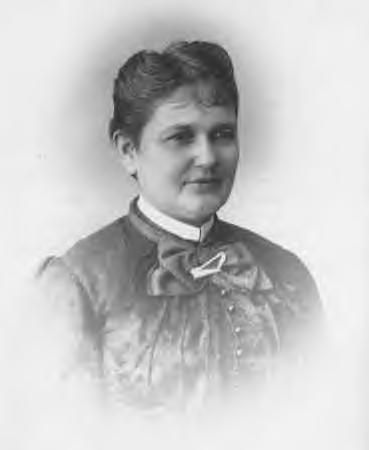- Lola Rodríguez de Tio
Infobox writer
name = Lola Rodríguez de Tio

imagesize = 150px
caption = Lola Rodríguez de Tio
pseudonym =
birthname = Dolores Rodríguez de Astudillo y Ponce de León
birthdate = September 14, 1848
birthplace =San Germán, Puerto Rico
deathdate = November 10, 1924
deathplace =
occupation = poet
nationality = Puerto Rican
period =
genre =
subject =
movement =
notableworks =
spouse =
partner =
children =
relatives =
influences =
influenced =
awards =
website =Dolores Rodríguez de Astudillo y Ponce de León, more commonly known as Lola Rodríguez de Tió (
September 14 ,1848 -November 10 ,1924 ), born inSan Germán, Puerto Rico was the first Puerto Rican born poetess to establish herself a reputation as a greatpoet throughout all ofLatin-America . [Toledo, Josefina, "Lola Rodríguez de Tió - Contribución para un estudio integral", Librería Editorial Ateneo, San Juan, Puerto Rico, 2002] A believer inWomen's Rights , she was also committed to theabolition of slavery and in the independence of Puerto Rico.Early years
Lola's father, Sebastián Rodriguez de Astudillo, was the founder of the Colegio de Abogados de Puerto Rico (the local bar association). Her mother, Carmen Ponce de Leon, was a descendant of
Juan Ponce de Leon . Lola received her education at home where she was home-tutored. This education helped her develop a life-long love for literature, especially for the works of Fray Luis de Leon which were to serve as her source of inspiration. She was very assertive since an early age; at the age of fourteen, due to a misunderstanding at home, she demanded to be allowed to wear her hair short against the conventional norm, a personal trademark that she kept through her life.Political activist
Lola moved to Mayagüez, with her family, where she met Bonocio Tió Segarra, whom she married in 1863. Tió was a writer and book importer who often wrote articles in the local press and was as much of an activist against the Spanish regime as was allowed by the government. After marrying Tió, she published her first book of poetry,"Mis Cantos" which sold the then amazing amount of 2,500 copies.
In 1867 and then again in 1889, Lola and Bonocio were banished from Puerto Rico by the Spanish appointed Governor Palacios. On their first exile they went to
Venezuela . On the second banishment they first moved toNew York and later toCuba , where the couple would reside until their respective deaths. In 1868, inspired byRamon Emeterio Betances 's quest for Puerto Rico's independence and by the attempted revolution called theGrito de Lares , she wrote the patriotic lyrics to the existing tune ofLa Borinqueña . In Cuba, Lola was elected a member to the Cuban Academy of Arts and Letters, and was an inspector of the local school system. She was well known in Cuba for her patriotic poetry about Puerto Rico and Cuba.Some of Lola's best known works are "Cuba y Puerto Rico son..." (Cuba and Puerto Rico are..) and "Mi Libro de Cuba" (My Book about Cuba).
In 1919, Lola Rodriguez de Tió returned to Puerto Rico where she was honored with a great banquet at the
Ateneo Puertoriqueño and where she recited her "Cantos a Puerto Rico".Lola Rodríquez de Tió died in November 10, 1924 and is buried in
Havana , Cuba.The design and colors of the
Puerto Rican Flag , which was adopted in 1954, came from Lolas idea of having the same flag as Cuba with the colors reversed. Puerto Rico has honored Lola's memory by naming schools and avenues after her.Lyrics to the revolutionary version of "La Boriqueña"
The following are the lyrics to Lola Rodríguez de Tió's 1868 revolutionary version of "La Boriqueña":
ee also
*
List of Puerto Rican writers
*List of famous Puerto Ricans
*Puerto Rican literature References
External links
* You may listen to "La Borinqeña" [http://www.ladanza.com/himnopr.htm Here]
Wikimedia Foundation. 2010.
